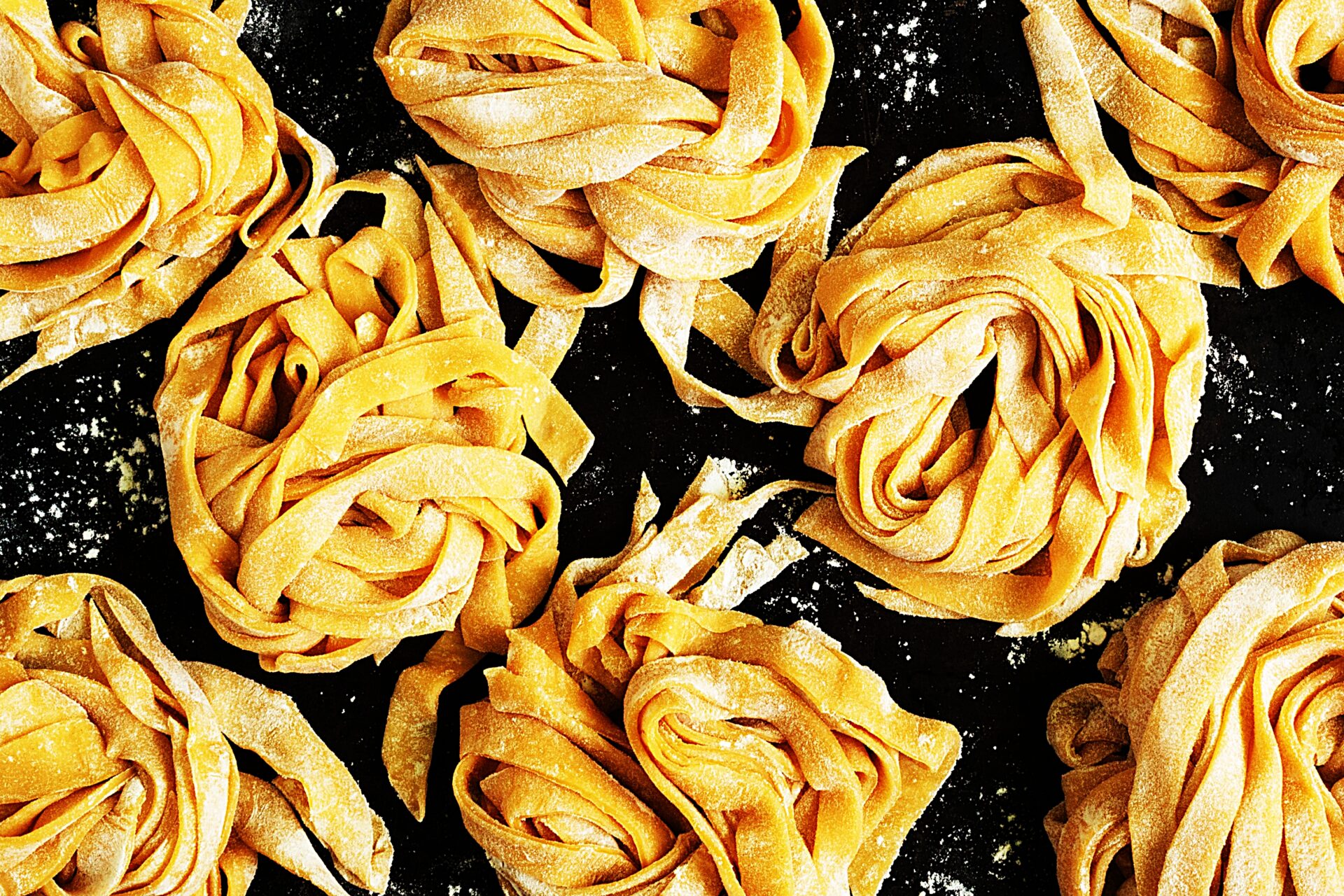This homemade pasta dough recipe, which makes 1 ½ pounds, has a beautiful yellow hue from the eggs and is great for making both cut and shaped pasta. You’ll notice there’s a range for the amount of flour. You’ll want to start with the lowest amount first — things like humidity, the size of the eggs, and how you measure flour are all factors that can affect how much flour you need. When measuring the flour, be sure you fluff up the flour with a spoon and then gently spoon it into a dry measuring cup, leveling the top with a knife. Make sure not to pack the flour or scoop it with the measuring cup.
Satisfy your sweet tooth with this easy-to-make recipe for Basic Homemade Egg Pasta Dough.
1. Info for Basic Homemade Egg Pasta Dough
- Cook Time: 1 hr 15 min
- Total Time: 1 hr 15 min
- Servings: 7
- Calories: 262.32 kcal
2. Ingredients for Basic Homemade Egg Pasta Dough
- all-purpose flour
- large eggs
3. Directions:
- Place 3 ¼ cups flour in a mound on a clean work surface and make a large well in the center. Carefully crack the eggs into the center of the well.
- Using a fork, whisk together the eggs in the well. Gradually mix the flour into the eggs, starting at the center of the well and moving outwards, and using the fork to create a batter consistency at first. Add a little flour at a time, mixing well before adding more (you may not need all the flour; the dough should be slightly sticky).
- Once all of the flour is incorporated, shape the dough into a ball and knead until small blisters form and the dough is smooth, elastic, and no longer sticky, about 10 minutes. As you knead, keep a light dusting of flour on the work surface if the dough starts to stick too much; or, if it’s too dry, add a few drops of warm water.
- Cover the dough with a damp towel or plastic wrap and let rest at least 30 minutes before cutting or shaping. (Letting it rest allows the flour to absorb liquid from the eggs and for the strands of gluten to relax. The longer you let the dough rest, the easier it will be to roll out.) Note: You can make the dough up to 2 days before using. Cover tightly with plastic wrap, and refrigerate. Let the dough come to room temperature before rolling out.
- To make fettuccine, on a lightly floured surface, cut the rested dough into 4 equal portions. As you work, keep unused dough pieces covered with a damp towel or plastic wrap. Using a rolling pin, roll 1 piece of dough as thinly as possible but still thick enough to be lifted off the counter without breaking. (The dough should be paper thin, but you shouldn’t be able to see through it.)
- Lightly dust the top of the fettuccine dough sheet with flour. Fold dough in half (bringing the short ends together) and dust the top with flour. Repeat folding twice more, dusting with flour between each layer to create a stack. Use a sharp knife to cut the dough into ¼-inch-wide strips. Separate noodles into “nests” and let dry uncovered on a lightly floured surface or baking sheet until no longer sticky (so they won’t stick to each other during cooking), about 15 minutes. Repeat the process with the remaining dough pieces.
- To make cavatelli, on a lightly floured surface, cut the rested dough into 8 equal portions. As you work, keep unused dough pieces covered with a damp towel or plastic wrap. Roll a piece of dough with your fingers into a ¼-inch-thick rope, dampening your hands with water if needed to help with rolling. Repeat to shape remaining dough portions into ropes.
- Cut each cavatelli rope into 1-inch pieces, again keeping them covered when unused. Working with 1 piece at a time, firmly press your index and middle fingers into the dough piece, flattening the dough as much as possible. While pressing down, move your two fingers towards your body, allowing the dough to flatten and curl up over your fingertips to create cavatelli (short pieces of pasta that are shaped like mini hot dog buns). Repeat with all of the dough pieces. Dust the dough with flour and place on a lightly floured surface or baking sheet. Let dry uncovered on a lightly floured surface or baking sheet until no longer sticky (so they won’t stick to each other during cooking), about 15 minutes.
- To make pasta ahead, toss the cut or shaped pasta in a little flour, seal in zip-top freezer bags, and refrigerate up to 2 days or freeze up to 4 months. Thaw frozen pasta in the refrigerator before cooking.
- To cook pasta, bring a large pot of salted water to a boil. Add the pasta and cook until al dente, 1 to 3 minutes for fettuccine or 10 to 15 minutes for cavatelli (be careful not to overcook, or pasta can get mushy). Add the cooked pasta to your favorite pasta sauce along with a little saved pasta water to help the sauce absorb into the pasta.

